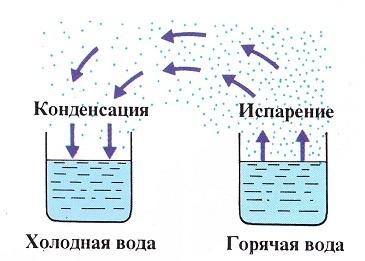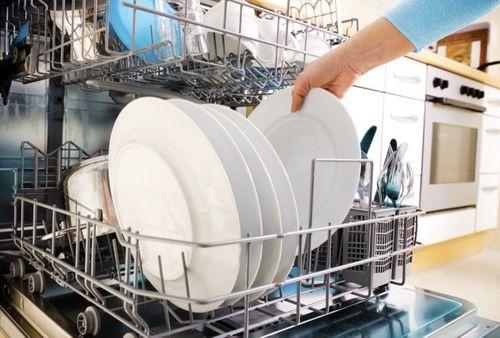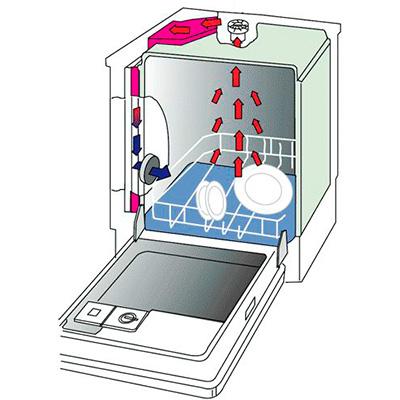Dishwashers are good because they completely take over the entire process of washing dishes - from dirty dishes to perfectly clean ones. And even dry, since each apparatus has drying, and in most cases it is condensation. What is it? Condensation drying in the dishwasher is the process of removing moisture residues due to their natural evaporation. Any questions left? Then read a more detailed review. Oh oh how the dishwasher works you can read in another article on our website.
What is condensation drying

Washing dishes by hand is quite tiring, isn't it? Therefore, progressive mankind has developed dishwashers. They not only wash our cups/spoons, but also dry them. At the same time, drying in them is most often condensing. And only in some expensive cars there is a place for a turbo dryer. How does the very first type of drying work? Understanding this is not difficult if you know the simplest law of physics - at a positive temperature, water tends to evaporate.
When we wash our favorite coffee cup and put it on the dryer (a kind of design of their metal rods), water droplets will remain on it.Already at this moment, it begins to dry under the influence of residual heat left after hot water. And even when the temperature of the cup reaches room temperature, the process will not stop - as long as there is an opportunity, evaporation takes place, albeit not the most intense.
The condensation dryer in the dishwasher works in a similar way. That is, as soon as the dishwasher finishes the next cycle, it begins to mess around in the most insolent way.At this time, the laws of physics are working hard for her. The remaining droplets begin to evaporate and condense on other internal parts of the machine - the condensate runs down. And this happens until the dishes, according to the manufacturer's calculations, are perfectly dry.
What are the benefits of condensate drying in a dishwasher?
- The process is absolutely silent;
- No electricity costs are required;
- There is no additional thermal effect (relevant for delicate crystal).
If we listen to what is happening inside, we will not hear anything. Evaporation during the operation of the condenser dryer goes without any sound. Time is ticking, the process is going on, but outwardly the dishwasher looks like it has already done its job and is patiently waiting for our actions.
Drying efficiency

Is condenser drying really as good as dishwasher manufacturers make it out to be? Of course, in practice, it periodically gives flaws. It all depends on the following factors:
- From the duration set by the manufacturer;
- From the rinse aid used;
- From the characteristics of the material from which the dishes are made.
When the rinse aid works, it endows the surface of the kitchen utensils with the property of not retaining moisture.. You should also take into account the conditions under which the developers determined the duration of the drying process - they are known only to themselves. And some materials dry faster than others.
Reading user reviews tells us that the results of dishwashers are sometimes disappointing - people observe random water droplets on porcelain, glass and metal. It does not always evaporate completely, so in some cases such flaws are considered acceptable.In the end, nothing prevents you from brushing off the ill-fated drops with a towel or a clean kitchen cloth.
An interesting fact is that there are three drying classes - A, B and C. Class A implies that the dishes will be completely dry. But for the remaining classes, the presence of drops is still allowed. In reality, condensation drying leaves moisture residue even with the highest grade. Apparently, it is impossible to get comments from the manufacturer on this matter - they will wave their heads at dishwashers with a turbo dryer. Therefore, you have to endure.
Other types of dryers

Condensation drying is not a monopolist - in parallel with it, a turbo dryer or intensive drying is installed in the machines. The first option is found many times more often and is a direct competitor to condensation drying. The point is simple - dishwasher (PM) blows dishes with hot air. Accordingly, inside such a dishwasher there are two additional elements:
- TEN - it heats the air;
- Fan - drives air through the working chamber.
Thanks to completely different temperature conditions, we get the same clean and dry dishes at the exit. But this time it is really dry, without any droplets. The time spent on a single cycle is also reduced. Are there any downsides to turbo drying? They are:
- There are additional elements in the design of the PM - this affects the reliability;
- PM with a turbo dryer are more expensive - you have to pay for an additional service;
- There are additional costs for electricity - the operation of the heating element affects.
We have already talked about the advantages.
Let's say a little about such a novelty as intensive drying. It uses the difference in temperature in the water trap and in the working chamber, which causes a difference in pressure - due to this, the dishwasher draws in outside air, which ensures the drying of kitchen utensils.Intensive drying wins in terms of efficiency of condensation drying, but loses to turbo drying. But a dishwasher with such a function will not consume too much electricity, which is a plus.

Comments
That's what I like about this type of drying in my Hotpoint PMM, it's that it is silent from the word at all.